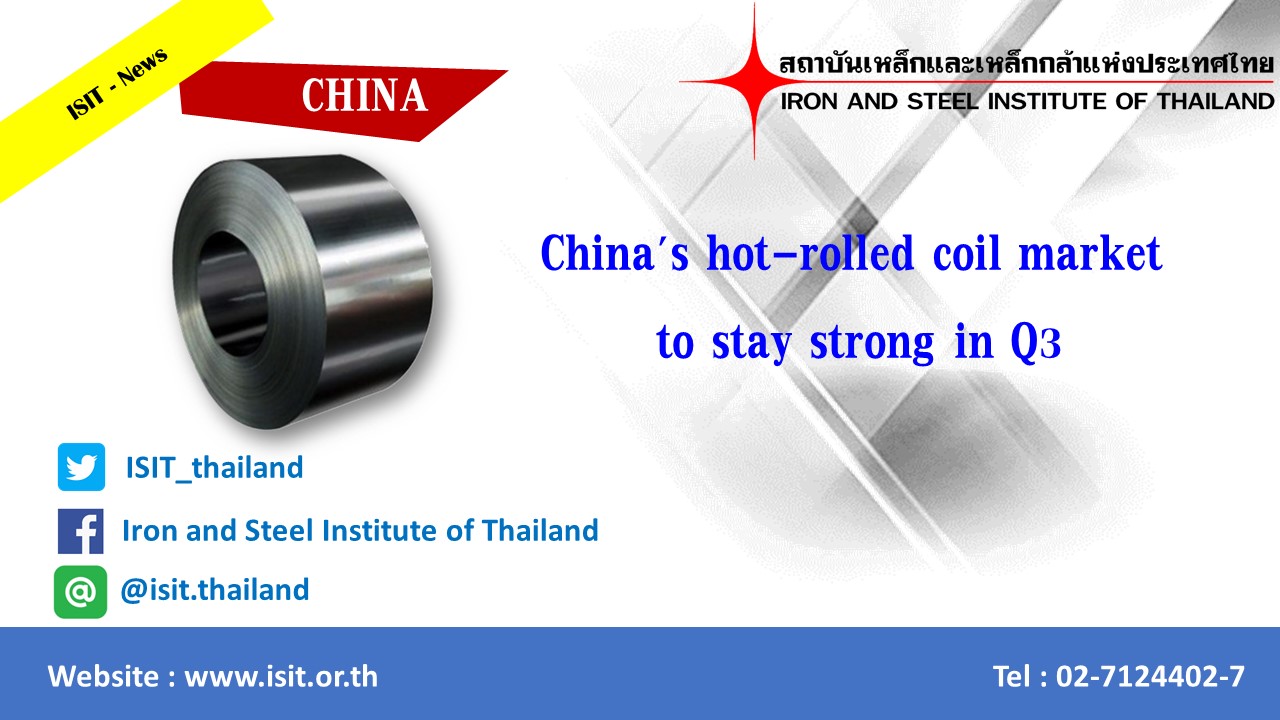China's domestic hot-rolled coil prices have resumed their upward trek since the start of July, after the short pause in late June, despite soaring production compared with a year ago.
Several market sources expect prices to extend their uptrend into August, attributing the strength in the HRC market to improving demand, speculative purchases, and the rising cost of iron ore at steel mills.
The HRC spot price in Shanghai rose Yuan 220/mt ($31/mt), or 6%, from June 30 to Yuan 3,940/mt on July 22, S&P Global Platts data showed. The domestic HRC sales margin almost doubled over the same period to $54/mt on July 22, Platts analysis showed.
Market sources said China's HRC output is expected to remain high in July, after increasing three months in a row over April-June.
Yet, the HRC inventories in eastern Shanghai and southern Lecong, two major HRC trading hubs, began to drop from April and continued falling in July, indicating continued improvement in end-user demand as manufacturing recovers, they added.
China's output of medium-wide HRC increased 3.7% year on year to 14.18 million mt in June, with daily output climbing 3.1% from May's level, the National Bureau of Statistics data showed. The output over January-June increased 7.2% year on year to 80.06 million mt.
According to local traders, HRC inventories in Shanghai and Lecong dropped 52% and 38%, respectively, from their peaks in early April to around 0.34 million mt and 0.62 million mt as of July 22. The current HRC inventories in Shanghai were 34% lower year on year, though those in Lecong were still 12% higher year on year.
In addition to improved end-user demand, speculative buying on the back of China's easier credit terms, has also helped support HRC prices.
Some traders said they were willing to buy as the Q3 outlook for the HRC market has been optimistic. They said the manufacturing sector as a whole will fare better in H2 than in H1, while a further increase in HRC supply from H1 levels should be limited, as there will be no new hot-strip mills commissioned until late 2020.
Platts calculations showed that China commissioned four new hot-strip mills with a total capacity of 15 million mt/year in H2 2019, and two with 4.7 million mt/year capacities in H1 2020. These new mills contributed the most to the year-on-year HRC output growth over January-June 2020.
In H2, eight more hot-strip mills with 17.85 million mt/year capacities are planned to be commissioned, but most are expected to come on stream end-2020, adding little to this year's HRC supply.
Meanwhile, some traders said rising iron ore prices had also boosted market expectations that HRC prices will be supported by higher production costs at steel mills in August.
Platts 62% IODEX increased by about 10% from the start of July to $110.40/mt on July 22. China's finished steel costs usually lag iron ore prices by three weeks.
Platts 62% IODEX เพิ่มขึ้นประมาณร้อยละ 10 จากต้นเดือนกรกฎาคม โดยอยู่ที่ 110.40 ดอลล่าร์ต่อตัน ณ วันที่ 22 กรกฎาคม โดยปกติ ต้นทุนเหล็กสำเร็จรูปจีนจะช้ากว่าราคาสินแร่เหล็ก ประมาณ 3 สัปดาห์
-- Analyst Jing Zhang
Source : Steel Business Briefing
